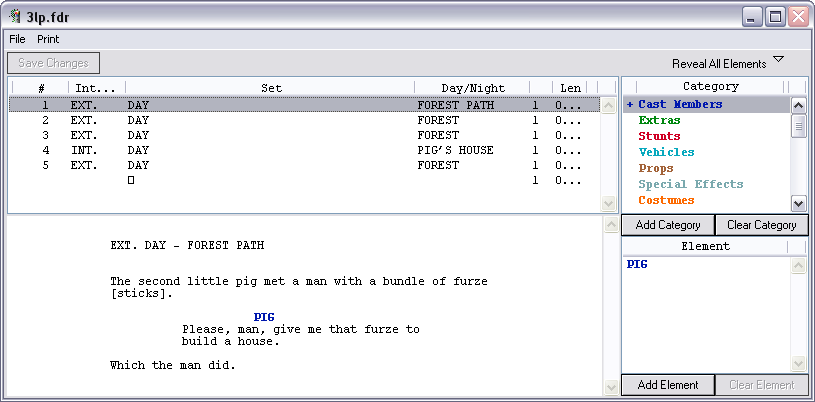
Ex moving between rooms, a retrospect or a telephone call between two parties.ĭo not make changes to a script directly in Studiobinder. New place in a manuscript must always be a new scene to work in StudioBinder. If the manuscript is another format than Final Draft, we have to convert it to Final Draft.Ĭheck that the manuscript is correct and if necessary, make changes in the manuscript.Ĭheck the formatting of a Final Draft script before importing into StudioBinder and make the necessary changes. If not, either rewrite the manuscript or end pre-production. If the manuscript is ”good enough” continue to next activity. Not to many B-stories and to many main characters in a feature or shortfilm There may be fewer beats in a short film.Ī key frame for each beat in the story to describe the essence in that each important sceneĮach scene should have a purpose in the storytelling, either a conflict or change Well defined story plot with both positives and negativesġ5 beats to drive the story forward in a feature or an episode in a series. ”Good enough” is a fuzzy term, but there are some basic guidelines to follow when making a narrative film. Review manuscript and assure that we have a structure in storytelling and it’s good enough. This activity is part of the Development process, but need to be done before script breakdown as part of quality assurance. The main roles involved in this process are: Production manager, Director, Writer, Script supervisor, Cinematographer and 1st AD.
Final draft tagger clear element pro#
You will be prompted to save changes to your current scene, before it is closed and your new project, generated from your script, is opened.įor more information on creating a new Storyboard Pro project, see Creating Projects.This workflow is based on the assumption that you have developed a story and then written a script for a short film, feature or series. Now, you will be asked to create your new project.When you have finished setting up your import parameters, click Import.Remember to select the Save as default rules option once you have your settings just right, so these settings are used as the default the next time you create your Storyboard Pro project from a Final Draft script. Try different settings with your style of script and see what works best for you. In the example above, Storyboard Pro will take all the text associated with the Action tag in the Final Draft file and put it in the Action Notes section in the Panel window for each new scene that it creates in this project.įrom the Import from Final Draft dialog box, below is a list of some sample settings for the most common tags: From the Destination caption field menu, select the location in the Panel window in which you want place the text associated with the selected tag.Select this option to import these into your Storyboard Pro project. Include Element Number When Available: In a Final Draft script, there are numbers along the right and left margins of the document that indicate a change in scene.However, if there are three Dialogue tags in a row without a break due to an Action tag, then selecting this option places these three lines of dialogue together in the same Panel. For example, you might choose to create a New Panel for every Dialogue tag that appears in the Final Draft script.




Select a tag from the left column, then select an item from the Action menu.After making a file selection, the other options in the window become active. Use the Browse button to search for an *.fdx or *.xml file exported from Final Draft.The Import from Final Draft window opens. Select File > New From Final Draft Script.


 0 kommentar(er)
0 kommentar(er)
